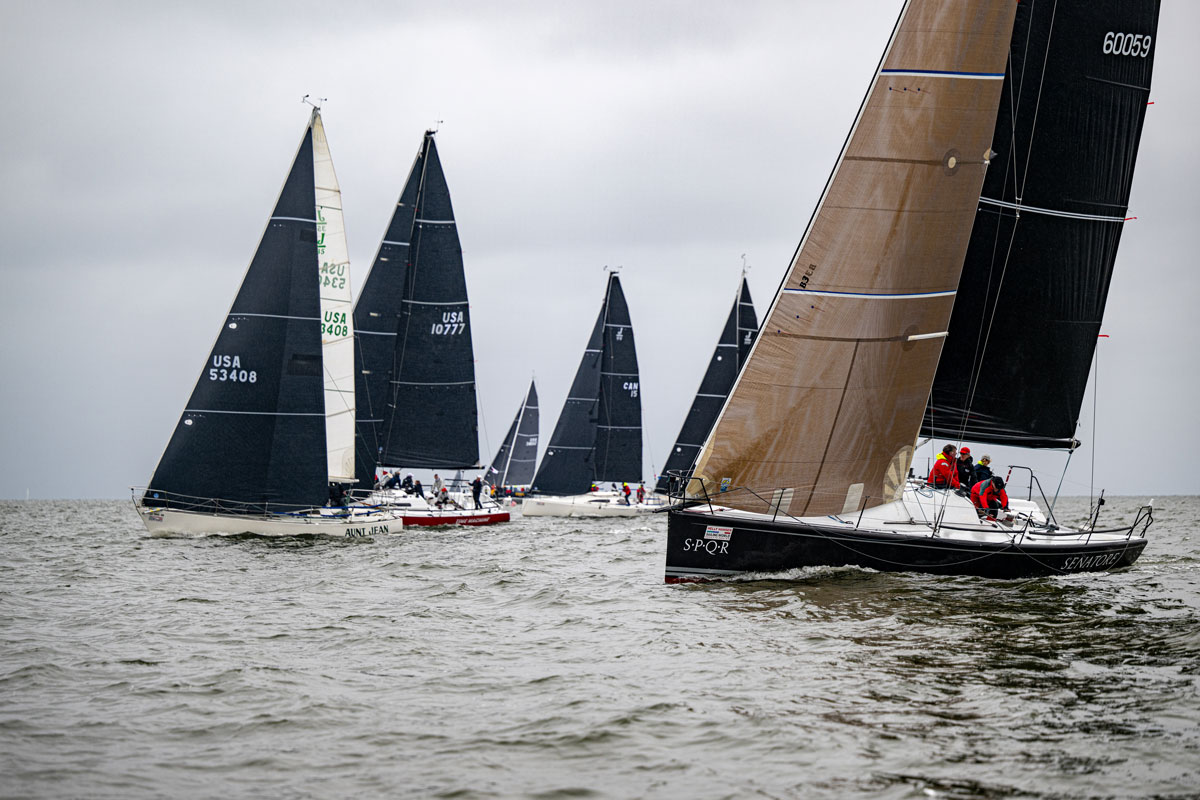În ENGLEZĂ – Se datorează unui pionier român al aerodinamicii, Henri Coandă, descrierea unuia dintre cele mai importante fenomene care antrenează curgerea în jurul unei folii. Ne oferă limita camber-ului pânzelor noastre, la fiecare viteză și direcție aparentă a vântului – cel puțin dacă ne place fluxul atașat! Cu Pietro Pinucci
source
E27 – Coanda effect

3 thoughts on “E27 – Coanda effect”
Comments are closed.




 #ship #lifeatsea #sailor #shipspotter #shipping #sailing
#ship #lifeatsea #sailor #shipspotter #shipping #sailing

It’s more complicated than just Reynolds number: it’s really the fullness of the boundary layer profile. That is to say a laminar boundary layer (medium-low Re) may be separating while a turbulent boundary layer (medium-high) Re would remain attached. Mechanisms that inject more high momentum fluid closer to surface or inner region of the boundary layer will remain attached. This can be achieved by “tripping” the BL to become turbulent early if it would otherwise be laminar (golf ball dimples) or using vortex generators, strakes and other devices.
Interestingly, the lowest (viscous) drag on an airfoil/sail is when the flow is about to separate. Wall shear stress is mu * du/dy, and separation occurs right when back-flow is about to start. So getting the wing as close to separation as possible (assuming that you are not increasing other parts of your drag budget, e.g., induced drag) without letting the flow separate will result in the least drag.
But one of the more interesting effects when discussing the foot of the sail, in my opinion, is the effect of twist and the change in apparent wind angle due to the atmospheric boundary layer. Since the wind speed is almost always high aloft, the apparent wind is more abeam there. This allows that lift vector to be more aligned in the direction of travel.
What’s really interesting about sails is that they’re (normally) not true airfoils with thickness. If you completely remove camber then you have a flat plate cross section. A flat thin airfoil (following the boom) will separate at the leading edge with a relatively small angle of attack.
Anyway, another interesting video! Thanks for sharing.
I’m learning so much from you guys thanks.
Hi,
Thank you for your informative videos. However, this Coanda-effect you are getting wrong. It has nothing to do with sail lift or flow separation – the water tap-spoon experiment you are showing is actually based on surface tension, rather than Coanda. The Coanda effect is usually associated with discrete jets blowing on one side of a (generally) curved surface. When it comes to sails (or foils), the flow is on both sides of the object and the mechanism for lift is different. See for instance https://en.wikipedia.org/wiki/Coandă_effect.